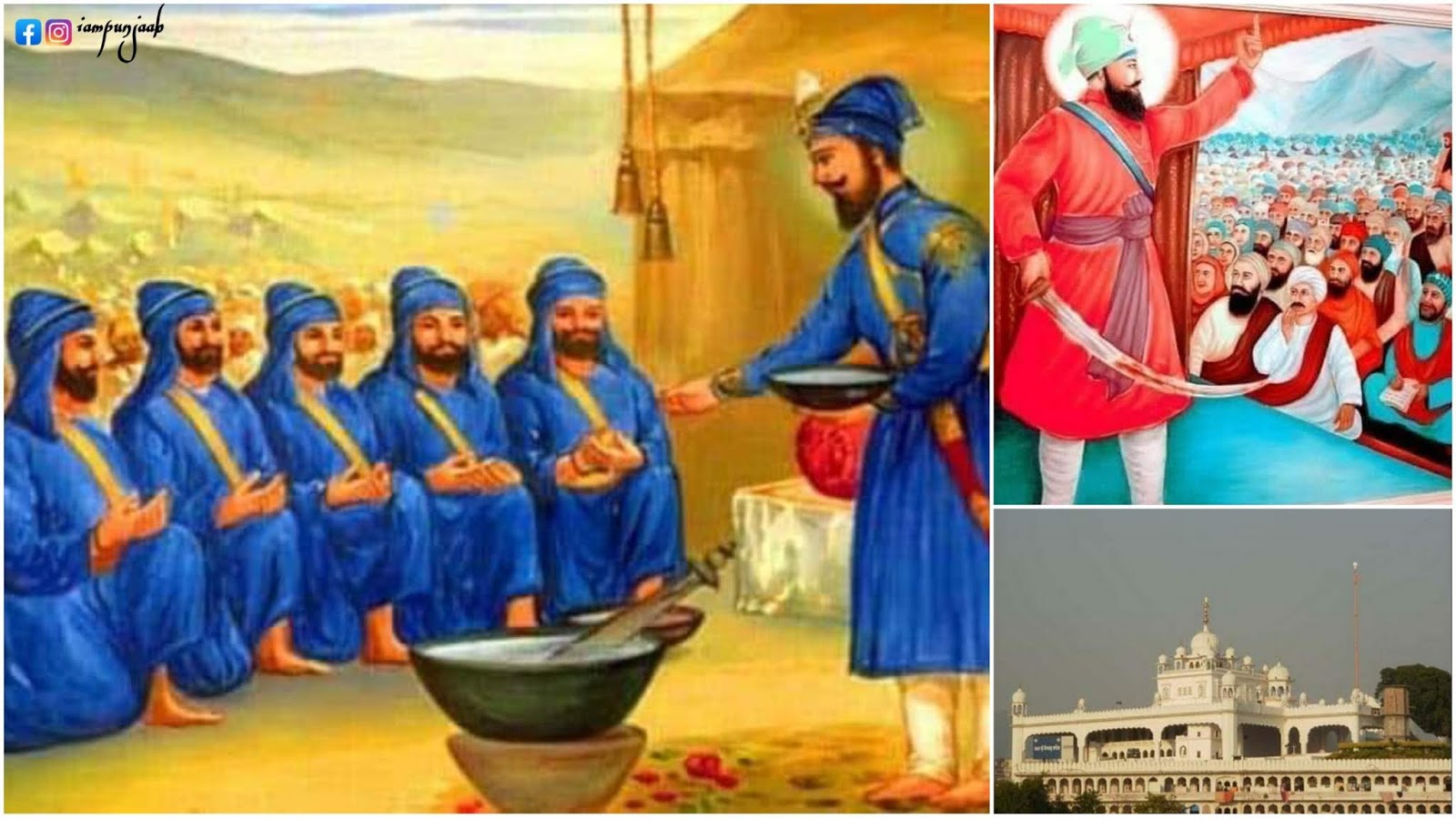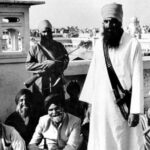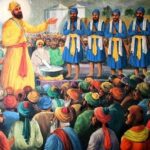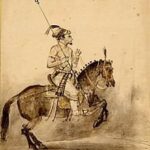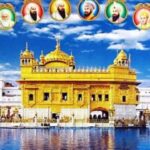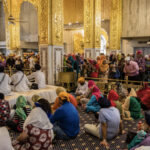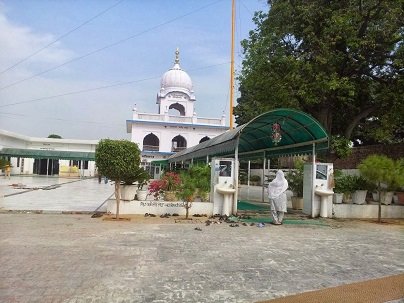Khalsa, (Punjabi: the Pure) the reconstituted and purified Sikh community instituted by Guru Gobind Singh on March 30, 1699 (Baisakhi Day; Khalsa Sikhs celebrated the birth of the order on April 13 of every year). His declaration had 3 dimensions: it provided the community with the new political and religious vision, it redefined the concept of authority within the Sikh community; and it introduced a new code of conduct and initiation ceremony. Khalsa is used to denote both Sikhs community and body of initiated Sikhs.
The earlier Sikh community had been shaped by three levels of authority: the masands (Guru’s deputies) were responsible for the local congregations; the revealed word as recorded in Sikh scriptural text served as the symbolic base and the Guru was the active central authority. With the set up of the Khalsa, the authority of the masands was getting rid of. They were expected either to become the community members on a par with all others or leaving the fold.
Gobind Singh also introduced the new initation rite. More commonly signify as amrit pahul (the nectar ceremony) but also denoted as khande ki pahul (literally, double-edged sword ceremony), it was centred on a faith in the transformative power of revealed word. The word recited while water for initiation stir with the double-edged sword. Every Sikh who underwent the ceremony became a Khalsa member, was assigning the name Singh (Lion), and expected to observe a rigorous code of conduct (rahit) symbolize by wearing of five items: kachha (a pair of shorts), kes (long hair), kirpan (a sword), kangha (a comb) and karha (a steel bracelet). The names of these items started with Punjabi letter k and thus came to be denoted as the five Ks. The Singhs were expected to forswear alcohol, tobacco, and certain kind of meat.
In its third aspect the Khalsa embody a concrete political agenda: the pledge realizing the Sikh community rule (Khalsa Raj, kingdom of God) in the Punjab. These three interlock dimensions made the institution of Khalsa perhaps the most influential force in shaping Sikh identity during past three centuries. Initially the male institution, it is now opening to women (who took the name Kaur Princess) as well, though Khalsa authority had remained firmly in male hands.
Khalsa (‘to be clear’ or ‘to be pure or ‘to be liberated ‘from’ or ‘to be free) refers to both a community that considering Sikhism as its faith, along with a special group of initiated Sikhs. The Khalsa tradition was initiated in 1699 by a Tenth Guru of Sikhism, Guru Gobind Singh. Its formation was the key event in the Sikhism history. The founding of Khalsa is celebrating by Sikhs during festival of Vaisakhi.
Guru Gobind Singh had begun Khalsa tradition after his father, Guru Tegh Bahadur, was beheaded during Islamic sharia rule of Aurangzeb (Mughal Emperor). Guru Gobind Singh initiated and created the Khalsa as the warrior with the duty protecting the innocent from religious persecution. The founding of Khalsa had begun a newest phase in Sikh tradition. It had formulated an initiation ceremony (nectar ceremony, amrit sanskar) and rules of conduct for Khalsa warriors. It had created a new institution for Sikhs temporal leadership, replace the earlier masand structure. Additionally, the Khalsa offered a political and religious vision for the Sikh community.
Upon initiation, a Khalsa Sikh is provided the titles of Kaur (female) meaning princess and Singh (male) meaning lion.The rules of life, involved a behavioral code denoted as Rahit. Some rules are no intoxicants, no tobacco, no Kutha meat, no adultery, a dress code (Five Ks) and no modification of hair on the body.
Background
The Sikhs was facing religious persecution during a Mughal Empire rule. Guru Arjan Dev, the fifth Guru, was executed and arrested by Mughal Emperor Jahangir in 1606. The following Guru, Guru Hargobind formal way militarised the Sikhs and emphasis the complementary nature of the spiritual power and temporal power. In 1675, Guru Tegh Bahadur, the father of Guru Gobind Singh and the ninth Guru of the Sikhs was executed by Mughal emperor Aurangzeb to resist religious persecution of non-Muslims, and refuse to convert to Islam. Guru Gobind Singh’s sons were killed since they refuse to convert to the Islam.
Foundation
In 1699, the tenth Guru of Sikhism, Guru Gobind Singh asking Sikhs to gather at Shri Anandpur Sahib on 13 April 1699, the day of Vaisakhi, the annual harvesting festival. Guru Gobind Singh addressing the congregation from the entryway of the tent pitched on a hill, now signify as Shri Kesgarh Sahib. He drew his sword, as per to the Sikh tradition, and then asking for the volunteer from those who gathered, someone keen to sacrifice his head. One came forward, whom he took inside the tent. The Guru return back to the crowd without the volunteer, but with the bloody sword.
